Australia orders evacuation of fire-ravaged towns before heatwave
Catastrophic blazes ripped through the country's south-east on New Year's Eve, killing at least eight people
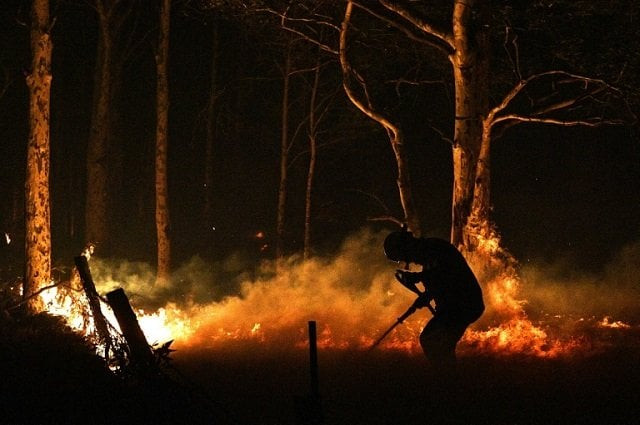
Catastrophic blazes ripped through swathes of the continent's south-east on New Year's Eve. PHOTO: AFP
Catastrophic blazes ripped through the country's south-east on New Year's Eve, killing at least eight people and stranding holidaymakers.
New South Wales (NSW) Premier Gladys Berejiklian declared a seven-day state of emergency that allows for forced evacuations beginning Friday, for the third time in Australia's most populated region this fire season.
In pictures: Hellish scenes from Australia bushfires
"We don't take these decisions lightly but we also want to make sure we're taking every single precaution to be prepared for what could be a horrible day on Saturday," she said.
It came after the NSW Rural Fire Service declared a "tourist leave zone" stretching about 200 kilometres (125 miles) from the popular holiday spot of Bateman's Bay along the picturesque coast to neighbouring Victoria state, where people are also being urged to flee.
At least 18 people are now known to have died in one of Australia's most devastating bushfire seasons yet, and there are growing fears the toll could rise dramatically, with officials in Victoria saying 17 people were missing in the state.
Visitors are being warned to leave affected areas before Saturday, when another heatwave is expected to sweep across the country, with gusting winds and temperatures above 40 degrees Celsius (104 Fahrenheit).
That weather will create conditions officials say will be as bad as -- if not worse than -- Tuesday, the deadliest day in a months-long bushfire crisis.
Many tourists and residents spent two nights isolated with no electricity or telecommunications, before authorities on Thursday declared some roads safe to use.
NSW Transport Minister Andrew Constance called it the "largest evacuation of people out of the region ever", with a queue of cars stretching along the highway toward Sydney as thousands flee the area.
One driver told AFP it had taken her three hours to travel just 50 kilometres (30 miles).
NSW Rural Fire Service deputy commissioner Rob Rogers said firefighters would be unable to extinguish or even control the raging blazes.
"The message is we've got so much fire in that area, we have no capacity to contain these fires," he told ABC.
"We just need to make sure that people are not in front of them."
John Steele, 73, who lives outside the south coast town of Merimbula, told AFP some people were "panicking" amid the warnings to evacuate.
"There's so much misinformation on Facebook and on the web," he said.
Steele said the region had been "chaotic" in recent days as fresh produce and fuel supplies ran low, but he and his wife were staying put for now.
"We're happy to see every man and his dog leave town," he said. "We are cautious, we have our bags packed."
The number of homes confirmed destroyed in recent days has topped 400, with that figure expected to rise as firefighters reach communities still isolated by flames.
Two Navy ships arrived in Mallacoota -- where people huddled on the foreshore for hours on New Year's Eve as a fire bore down on the remote town -- to begin evacuating up to 4,000 people in an operation officials say could take weeks.
Victoria joint bushfire task force commander Doug Laidlaw saying the first evacuees would be moved onto the vessels Friday morning, with children, the sick and elderly taking priority.
"If we need to reset and (return) again, weather permitting, that is exactly what will happen," he said.
Military aircraft have also been working with emergency crews to drop relief supplies into isolated areas and continue assessing the extensive fire damage.
This season's blazes have destroyed more than 1,300 homes and scorched over 5.5 million hectares (13.5 million acres) across the country -- an area far greater than Denmark or the Netherlands.
Suburbs of cities like Sydney and Melbourne, home to several million people, have also been hit by bushfires.
The blazes have shrouded Australia's capital, Canberra, in acrid smoke haze that has travelled as far as New Zealand, turning the air over glacier peaks brown.
The unprecedented crisis has sparked street protests calling on the government to immediately act on climate change, which scientists say is creating a longer and more intense bushfire season.
Conservative Prime Minister Scott Morrison has come under increasing pressure for his actions, which included holidaying in Hawaii as the disaster unfolded and reiterating his support for Australia's lucrative -- but heavily polluting -- coal mining industry.
WATCH: Bushfire smoke shoots Sydney into top 10 global pollution index
In his first official press conference since the latest blazes flared, Morrison said Thursday said "every absolute effort" was being made to assist affected communities.
"The best way to respond is the way that Australians have always responded to these events and that is to put our confidence in those who are fighting these fires," he said, while defending Australia's climate change policies as "sensible".

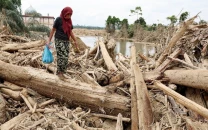
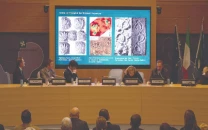
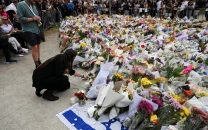
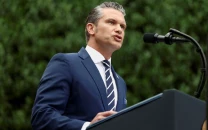
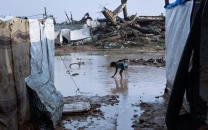



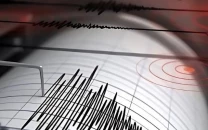
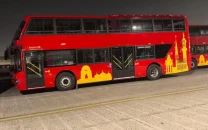

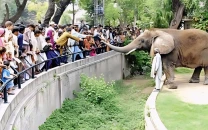






COMMENTS
Comments are moderated and generally will be posted if they are on-topic and not abusive.
For more information, please see our Comments FAQ